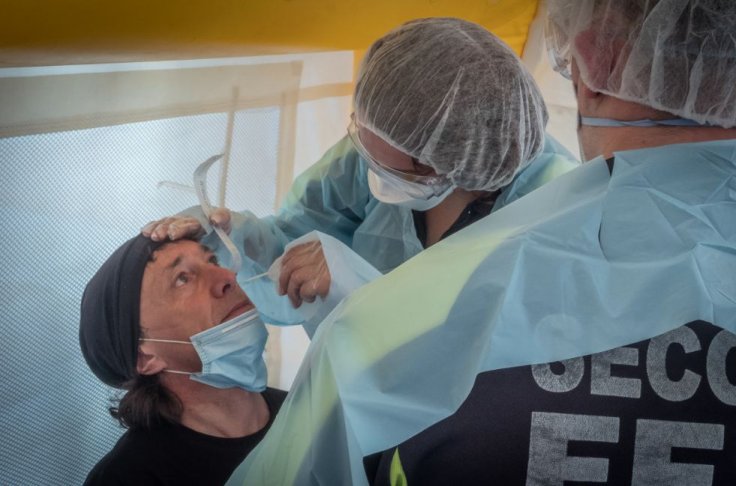A coronavirus or COVID-19 swab broke inside a lung when it was inserted into her breathing tube in her neck, a medical case report has stated. The woman recently underwent surgery and had a tracheostomy put inside, which is a tube cut into the throat for helping her breathe without using the nose or mouth.
During a coronavirus scare, while she was in the hospital, a nurse tested her for the deadly disease by putting the swab in through the hole in her neck as she was not using her nose and mouth. But the swab broke during the process. The end of it fell off and settled in the lung of the woman. It was invisible on the X-rays and CT scans but the doctors could see some unusual swelling in the right lung.
As they put a camera in her lung they found that the swab that was lodged in her airway and pulled it out with an endoscopy. The doctors are now giving a warning about the chance of swabs breaking during the use. "This case highlights the need for clear guidance on how samples for SARS-CoV-2 are taken from patients with front of neck airways and the potential pitfalls involved," the doctors stated.
Coronavirus Swab Test a Risk?

The team was working at the University Hospitals of Leicester NHS Trust as they treated the woman. She recently had surgery for removing a fragment of her skull for an unrelated disease and required the tracheostomy for helping her to breathe. She was going to be discharged to a care home and required to have a coronavirus test before going.
The doctors wrote in the BMJ Case Reports journal, "During the sampling, part of the swab stylet snapped and was inadvertently dropped through the tracheostomy site. Initial CT imaging was reported as showing no signs of a foreign body but some inflammatory changes [swelling]. Bedside flexible endoscopy through the tracheostomy site revealed the swab in a right lobar bronchus. This was subsequently removed by flexible bronchoscopy."
The swabs are designed in such a way that they snap in half when force is given. Normally, they are wiped around the inside of the throat and nose and then placed in a test tube as the handle is snapped off. The handle is longer than the test tube as it has to reach the back of the throat without the person giving the test coming close to the patient. But only the tip of the swab actually gets the sample on it and requires testing.
Testers normally have to try to get samples of the fluid from the nose and throat as that is where the coronavirus fixes onto the body and also multiplies. The leader of the doctors Dr. Hussain and colleagues said, "The above case highlights the potential dangers of taking a mucosal swab from a tracheostomy site. Heightened concerns around SARS-CoV-2 and wearing full personal protective equipment increase the probability of a human error occurring."
The deadly virus outbreak has created a major stir around the world in recent times infecting more than 38.5 million people worldwide and claimed the lives of over one million people globally in more than 170 countries.








